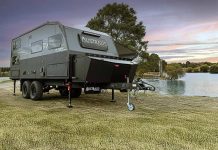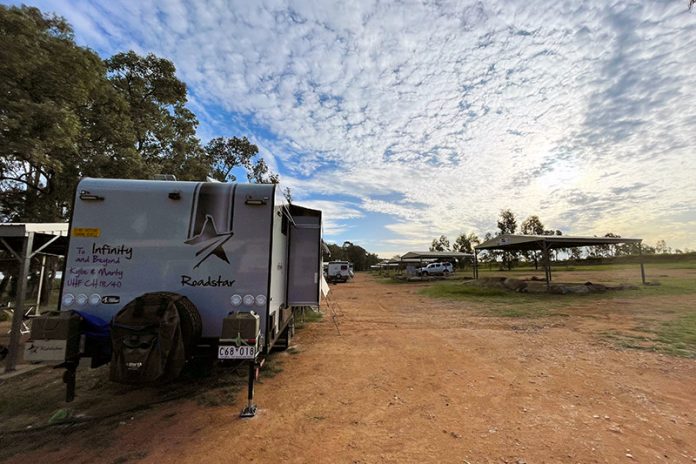
You’ve likely never given much thought to the type of suspension with which your passenger car was fitted. As long as it has a comfortable ride, who cares what’s keeping the wheels on the ground? Even buying a 4WD these days, the type of suspension plays less of a part than it did 20 years ago. But when it comes to purchasing a caravan or camper trailer, the type of suspension fitted is a big deal and can form a large part of the decision-making process.
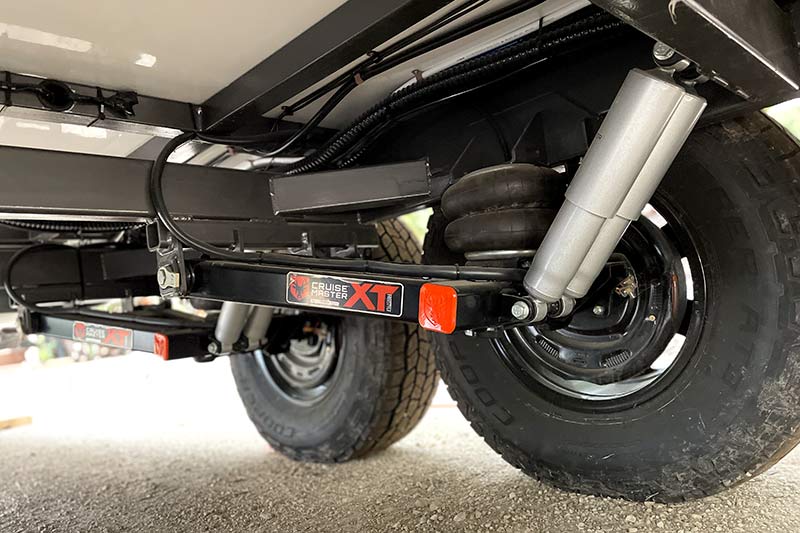
In this article, we want to give you a basic rundown of the various types of suspension available. We’ll attempt answer the most common questions asked about caravan suspension as plainly as possible.
SINGLE VS MULTI-AXLE CARAVAN SUSPENSION
Before we get too involved in suspension types, it’s worth discussing the option of single or multiple-axle suspension configurations. Many owners want to know if there are advantages or disadvantages to either. Fortunately, this is very easy to answer.
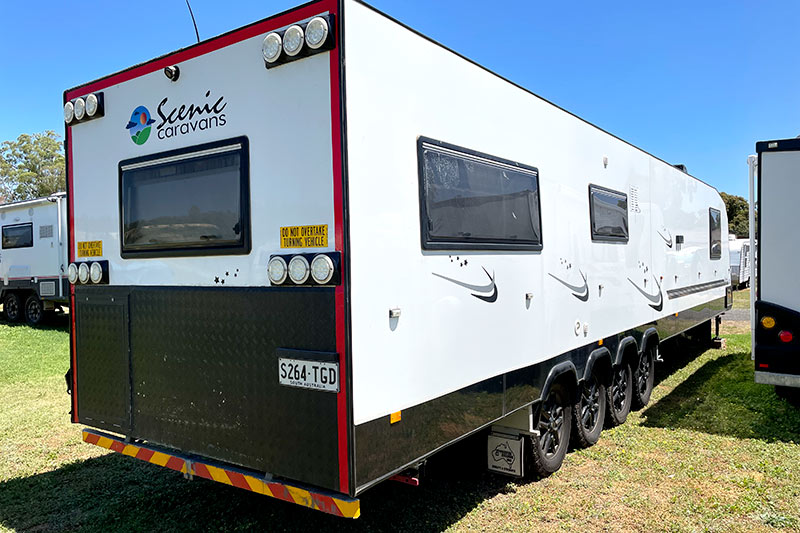
Single-axle configurations are generally fitted to small and medium-length trailers up to around 18ft. Most camper trailers will have single axles. Single-axle trailers will have a significantly less weight carrying capacity than multi-axle configurations. If you get a puncture in one tyre, it will have an immediate effect on the trailer’s drivability. If you have a tyre blowout, the effects on the trailer will potentially be catastrophic.
On the plus side, single-axle trailers are much more manoeuvrable and are easier to reverse into a tight site. They are also more suitable for severe offroad conditions where ground clearance and ramp-over capabilities are required.
Multi-axle suspension systems are best suited to long caravans carrying heavy loads. While double-axle setups are the most popular for trailer lengths up to around 23ft, triple-axle configurations are seen on longer vans. We’ve even seen a four-axle caravan during our travels. Multi-axle caravans are generally more stable and less affected by a single tyre puncture or blowout. In fact, some owners have driven many kilometres with a blown tyre on a double-axle caravan and have not noticed any effects on general drivability.
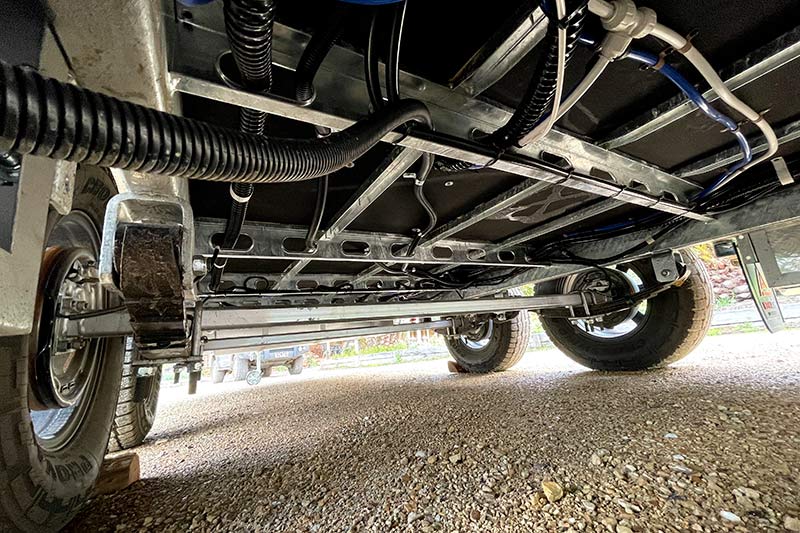
Reversing a multi-axle caravan into a tight site can be a challenge, requiring more skill on the part of the driver. A lot has to do with the physical length of the van, but there is also an inherent resistance to change directions.
When it comes to traversing long distances on unpaved roads, there is a school of thought that single-axle trailers are more suitable as the van only ‘hits the corrugations once’. That’s true to a certain degree but multi-axle suspension spreads the effect over a wider area of contact with the road, lessening the effect the corrugations have on each wheel.
CARAVAN SUSPENSION TYPES
When it comes to trailer suspension, there are two main categories:
Solid beam axles where the left and right-hand wheels are connected by a solid metal beam. This means what happens to one wheel will have some effect on the opposing wheel on that axle. These are elementary suspension systems that are inexpensive to manufacture and maintain. They generally do not feature shock absorbers, making the ride for your caravan’s contents rather rough. Because of this, caravans with this sort of suspension are not suited to rough, offroad conditions.
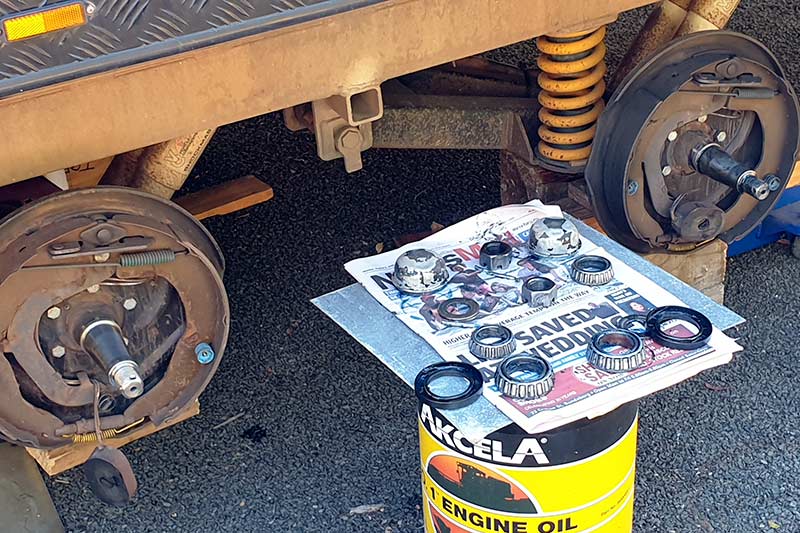
Independent caravan suspension where there is no physical connection between opposing wheels. This allows the suspension at each wheel to travel independently of the opposing wheel. These suspension systems usually (but not always) feature shock absorbers with coil springs or airbags, making them ideally suited to offroad conditions. That said, they are much more complex to manufacture, so costs are higher than solid beam suspension systems. Maintenance costs can potentially be higher but that depends heavily on the type of terrain the caravan is put through.
WHICH SYSTEM CAN CARRY THE MOST WEIGHT?
In the old days, you may have said that solid beam axles with leaf-spring suspension would be better for carrying heavy loads but that isn’t the case anymore. When it comes to caravans, heavier vans tend to feature independent suspension.
DO I NEED SHOCK ABSORBERS?
This is a great question for around the campfire because it’s bound to start an argument. Shock absorbers do exactly as their name suggests: they absorb the shock generated when a wheel hits a bump or hole by controlling the rebound of the spring. This keeps the wheel in contact with the road, smoothing out the ride.
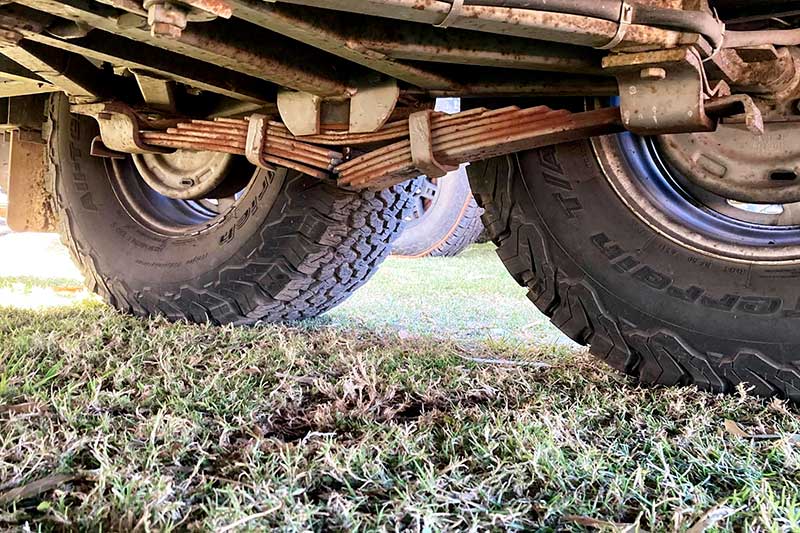
Leaf springs do have some shock absorption abilities thanks to the friction generated between the individual leaves in the spring pack, so many people say that shock absorbers are not necessary for these types of suspension. In reality, friction cannot completely eliminate the bouncing effect.
Coil springs have no inherent rebound control, so shock absorbers must be fitted to these suspension systems.
DO I NEED LOAD-SHARING SUSPENSION?
In order to answer this correctly, it is important to know what load-sharing suspension actually does. The load on any trailer, including a caravan, is generally not distributed evenly, either front to back or side to side. This means the load on each wheel will be different unless the suspension is load-sharing. In trailers with more than one axle, if too much of the trailer’s weight is on one wheel, it can affect handling, stability and wear and tear.
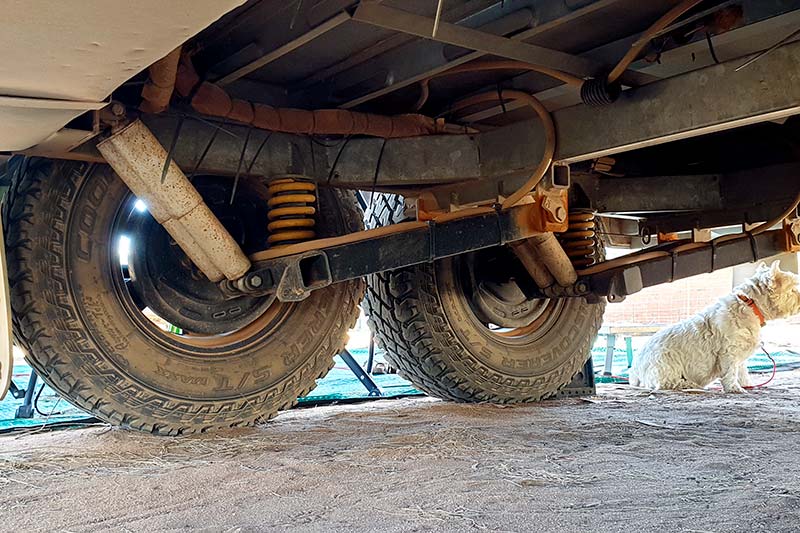
For this reason, the Australian Design Rules (ADRs) specify that “all axles in a group must be interconnected by a load-sharing suspension except in a close-coupled axle group where the two axles in a group have their centres not more than 1m apart, three axles not more than 2m apart, or four or more axles not more than 3.2m apart”.
Where non-load-sharing caravan suspension is used in close-coupled axles, the ADRs go on to specify that the following must apply: “The individual axles, and the wheels and tyres fitted to each axle, must have a load-carrying capacity at least 120 per cent of the load on that axle with the trailer at its ATM (maximum permitted load)”.
The vast majority of suspension systems used on Australian caravans will be either load-sharing or close-coupled systems so, at the end of the day, it really doesn’t matter.
OVER-SLUNG OR UNDER-SLUNG AXLES?
With basic solid-axle leaf-spring caravan suspension, the most common configuration is an under-slung axle where the spring is mounted under the axle. They are designed this way to provide a low centre of gravity, which aids stability, but ground clearance can be compromised.
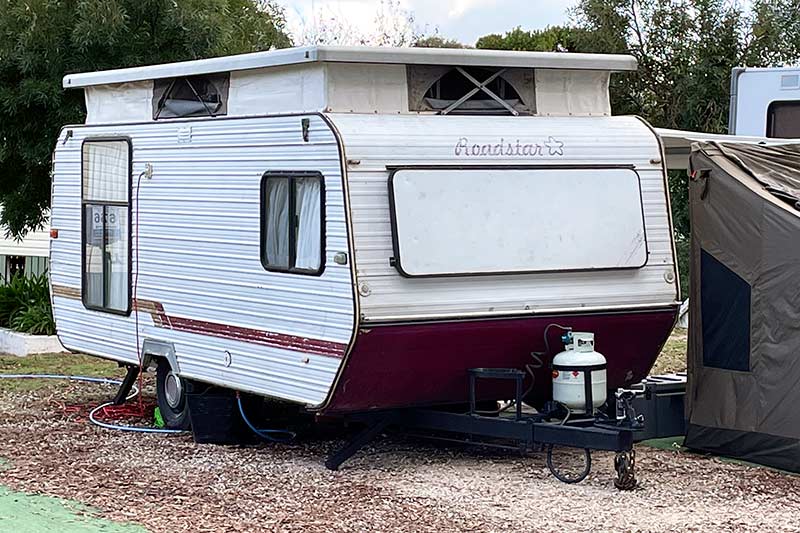
You may have seen some caravans that scrape their rear end on driveways and even mild speed humps. It can be a real problem if you want to go offroad.
For this reason, some manufacturers use an over-slung axle where the spring is mounted on top of the axle. This increases ground clearance dramatically but it potentially comes at the cost of some stability due to the higher centre of gravity.
Some owners of caravans with under-slung caravan suspension convert it to over-slung, thinking it is a fairly simple process, but you should never do this without professional advice. This conversion can mean ancillary items like brake cables and wiring may need to be lengthened and you shouldn’t be doing this unless you are absolutely certain you know what you’re doing.
CHOOSING THE RIGHT SUSPENSION
Deciding on the right suspension system for your van will depend on a number of factors. Where will you be towing your caravan? Do you need to carry a lot of weight? Will you be going offroad? What is your budget?
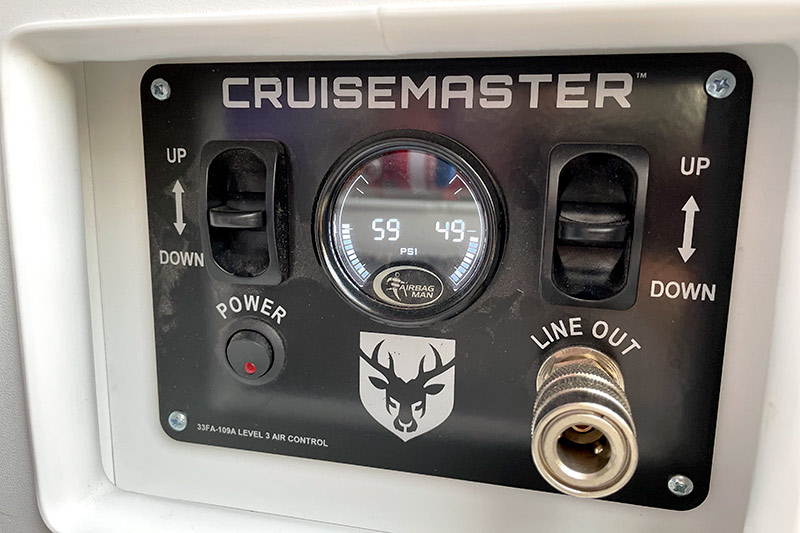
I’ve owned and towed a wide variety of caravans and trailers over the years and I believe airbag independent suspension is the best by a country mile. It provides the best ride and towing stability of any configuration, particularly over rough roads and in offroad conditions.
It has the added benefit of easily levelling the caravan when parked on an uneven site, without having to resort to levelling ramps.
In saying that, I acknowledge that these systems are among the most expensive suspension options out there and not everyone needs or can afford such a high-end solution.




